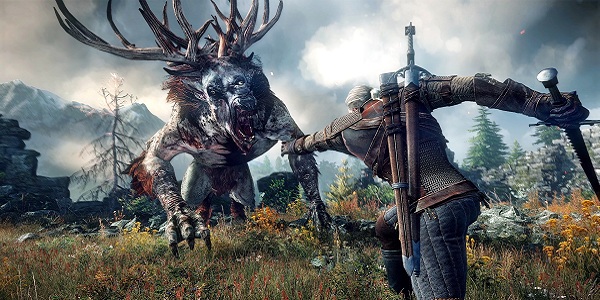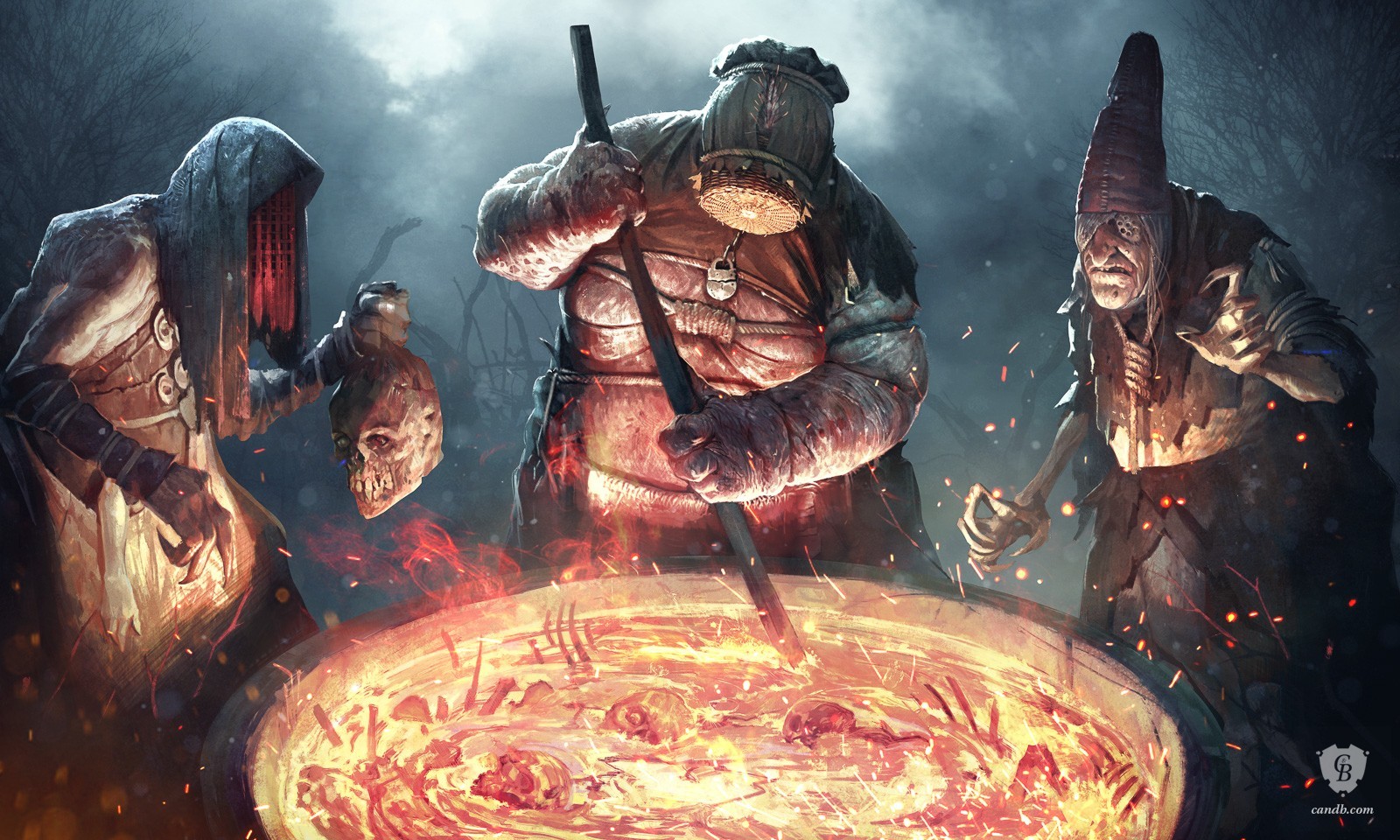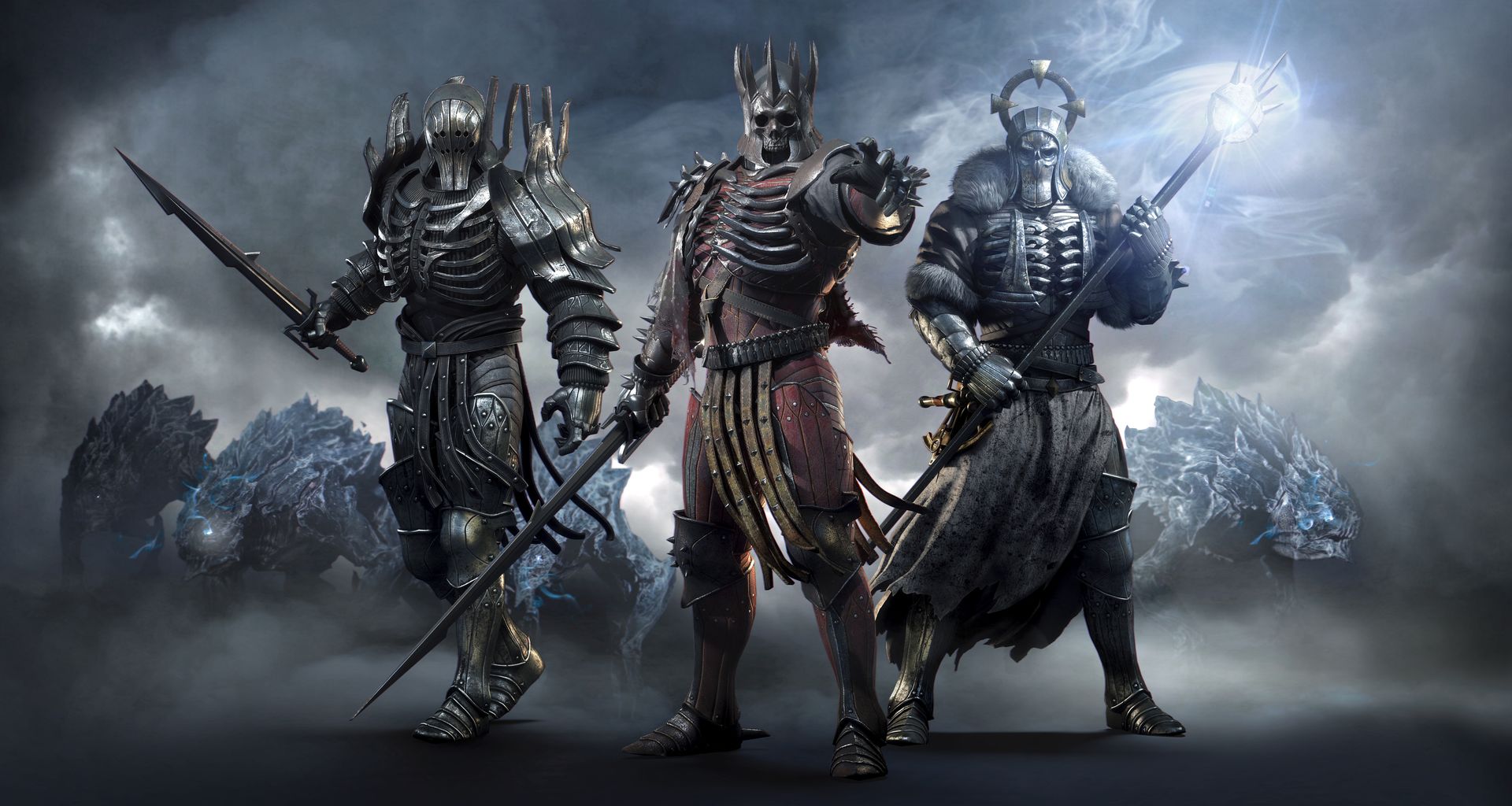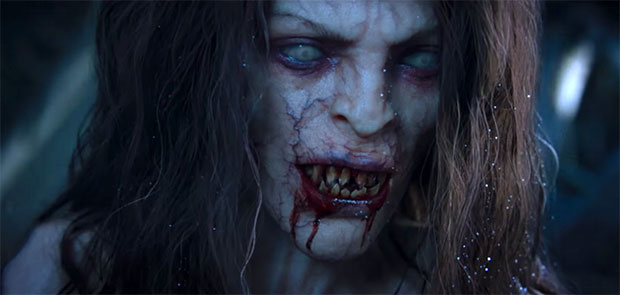Faction Identity #6: Monsters
With this final entry on Faction Identity, we come to the most dangerous and bloody faction in Gwent: the Monsters.
They are very different from any of the other factions, as they are not bound to a specific geographic area, nor do they fight under one banner. They have many disparate tribes, like the riders of the Wild Hunt, as well as different kinds of monster-races, some of which will all swarm out of the deck at once - such as Foglets, Crones, and the Arachas.
They have the most diversity in creatures and races as they cover all monsters from the Witcher universe.

Mechanics:
Monster-themes are translated into various mechanics within Gwent, which are often separated by the type of creature they are. We will start with sorting units by their core-identity and their mechanic in a vacuum, meaning synergistic and archetypal synergies will be ignored.
Breeding-Creatures: Foglets, Arachas, Harpies, Woodland Spirit, Fire Elemental, Crones
Smaller creatures like Foglets, Arachas and Harpies have lower strength, but an ability which allows them to spread more units on the battlefield with either muster-effects or spawn-effects of smaller creatures, which in the case of harpies are also able to transform into even more units. A single card played will always result in multiple threats for the opponent, whether it is eggs spawned by a Harpy or secondary Crones pulled out of the deck by their initial sister.

Growing-Monsters: Nekker, Ancient Foglets, Vran Warrior
While growing creatures are not too common in the faction, they still function as an essential core of many decks using this specific mechanic, mostly within the consume archetype.
They are very dangerous for any opponent as they can gain uncapped value and will be stronger the longer a game goes. However, they are very weak against disruption tools like Shackles, removal or reset effects like Dimeritium Bomb, since they are only boosting (green strength) themselves not strengthening (white strength).
Devouring-Monsters: Ghoul, Kayran, Giant Toad, Katakan, Grave Hag
Devouring creatures are very clear with their identity as they all very explicitly belong to the consume archetype, and all have a singular devouring effect when they enter the battlefield. Some of these units are strong enough that they can be run in any Monster deck, regardless of synergy with the consume tag.
Moving-Monsters: Caranthir, Ge’els, Succubus, Jotunn, Drowner, Griffin, Wild Hunt Navigator, Caretaker, Frightener
These units are able to move units around in one way or another: be it moving them to a specific row on the board itself, or moving a unit from the opponen’ts graveyard to yours or even have the ability to move it back onto your own board. In case of Ge’els and the Wild Hunt Navigators, they are using teleportation to spawn more units.
The moving mechanic is still relatively new to monsters, introduced primarily with just the Drowner card during Closed Beta, and will very likely be expanded and refined upon in the future.
Weather: Wild Hunt Hound, Woodland Spirit, Caranthir, Water Hag
While this is more archetypal than an ability, the Monsters have so many units, which are able to spawn or summon weather on their own that it is impossible to not include them in this list. All these units are able to inflict one kind of weather upon the opponent, and besides the Wild Hunt Hound, all of them are able to spawn the weather without using any other card. There are several more units in the faction which are synergistic with the weather archetype (Foglets, Imlerith etc..), but those have no direct weather-delivery mechanic on their own.
Leaders:
The leaders of the Monster faction are very archetypal and so are heavily identified with a specific mechanic and specific units. Dagon synergizes well with heavy weather-decks, the Unseen Elder belongs in Consume, and Eredin for Wild Hunt and Hybrid decks. As one of the only factions where all 3 leaders have appeared in the Witcher games themselves, but aside from Eredin, both the Unseen Elder and Dagon are not very well known as characters in the general player community.
"That is not dead which can eternal lie, and with strange aeons even death may die.
Powers older than humanity slumber in the depths, where no sunrays disturb them. Gods and demons sleep in underwater cities awaiting their time, and it is said that when the hour comes, they will awaken and bring annihilation to the world. One of those creatures, Dagon, rests at the bottom of the lake and is worshipped by vodyanoi and lunatics. Dagon is an embodiment of strength and fury, and when he comes ashore, he becomes destruction incarnate. Forbidden books like the Hymns of Madness and Despair describe the ways to summon him, for he can only be called to a place dedicated to him."
-Journal Entry about Dagon from The Witcher 1
Dagon´s name-choice is clearly influenced by the short stories of H.P. Lovecraft, and his eldritch appearance reflects this entirely. His ability makes a lot of sense looking at him being a vengeful water-god in The Witcher 1.

Moving to Eredin Bréacc Glas, aka “Sparrowhawk” aka the King of the Wild Hunt.
While by default Eredin was the main villain of the 3rd Witcher game, even after completing the game he remains a rather mysterious person. He is like most of the Wild Hunt, an elf of Aen Elle. These elves come from a different world, in which nonhumans are not hunted or abused in any way, explaining why the elves of the Wild Hunt that we meet are a very upfront, aggressive, and imperialistic people. Eredin is an extremely strong fighter, who uses his sword mastery, magic and teleportation to his advantages. This is why he is able to spawn any one bronze Wild Hunt unit to the board, regardless of whether you have any in your deck. If we see new bronze Wild Hunt units in the future, this will be a very important thing to keep in mind when evaluating Eredin’s diverse potential.
Last but not least they have the higher Vampire known as the Unseen Elder, whose real name is a mysery. He isolated himself in a cave between the human and vampire dimensions. Every visitor who comes before him needs a reason of true significance to merit going there, as he is incredibly powerful and has no qualms about casually killing intruders, whether it be human or vampire who would disturb his “peace”.
In one of the endings of Blood & Wine, we can witness his strength, when he insta-kills the player the moment they dare to ask a stupid question. He is assuredly one of the most fearsome beings in the Witcher universe. In Gwent he possesses the ability to consume units, which is in check with the classic vampire theme as it represents their endless hunger and drive to leech life from others.
Feeling like a Monster

The average Monster player wants to play huge units, which can give them a feeling of might and satisfaction for their bloodlust, while they listen to the almost-disturbing but nevertheless-great Witcher music for Monsters.
Monster players want to play archetypal gameplay which fits highly synergistic units into one deck. Consume-monsters are currently the best example of that. With the removal of Weather-immunity, adding of agility on almost all cards, and overall simplification of the game has led to a situation in which Weather as an archetype doesn’t feel unique to monsters anymore, where they were once the only faction which consistently ran Weather cards. Between this and the fact that Consume monsters is a bit more on the weaker side currently, leads to a situation in which many of the current Monster-decks do not feel satisfying enough in terms of identity and more like decks in which you just play for best value cards, comparable to the old Control Nilfgaard decks from the Closed Beta. I see this as a major reason as to why Monsters, despite having a tier 1 deck, are seeing significantly lower amounts of play compared to the other tier 1 factions like Nilfgaard and Skellige.
Tribes and future design:
Currently the only real tribe in Monsters are the Wild Hunt units, which have some synergy together and can be roleplayed as a whole deck. I am sure tribes is something CDPR will look at and explore further for the Monster faction, I personally hope for a further development and experimentation with the “Vampire” tag. Maybe in conjunction with the “Deathwish” mechanic, which was recently introduced and will definitely be developed further. I for one cannot wait to see where CD Projekt Red will take us with that and general future card design.
This is GumGum and the “faction identity”-series rolling out with this final installment. Hope you had as much fun exploring the factions and their design as I did.
overview of all Parts:
#1: Intro and Explanation #2: Skellige #3: Nilfgaard #4: Northern Realms
#5: Scoia’tael #6: Monster
